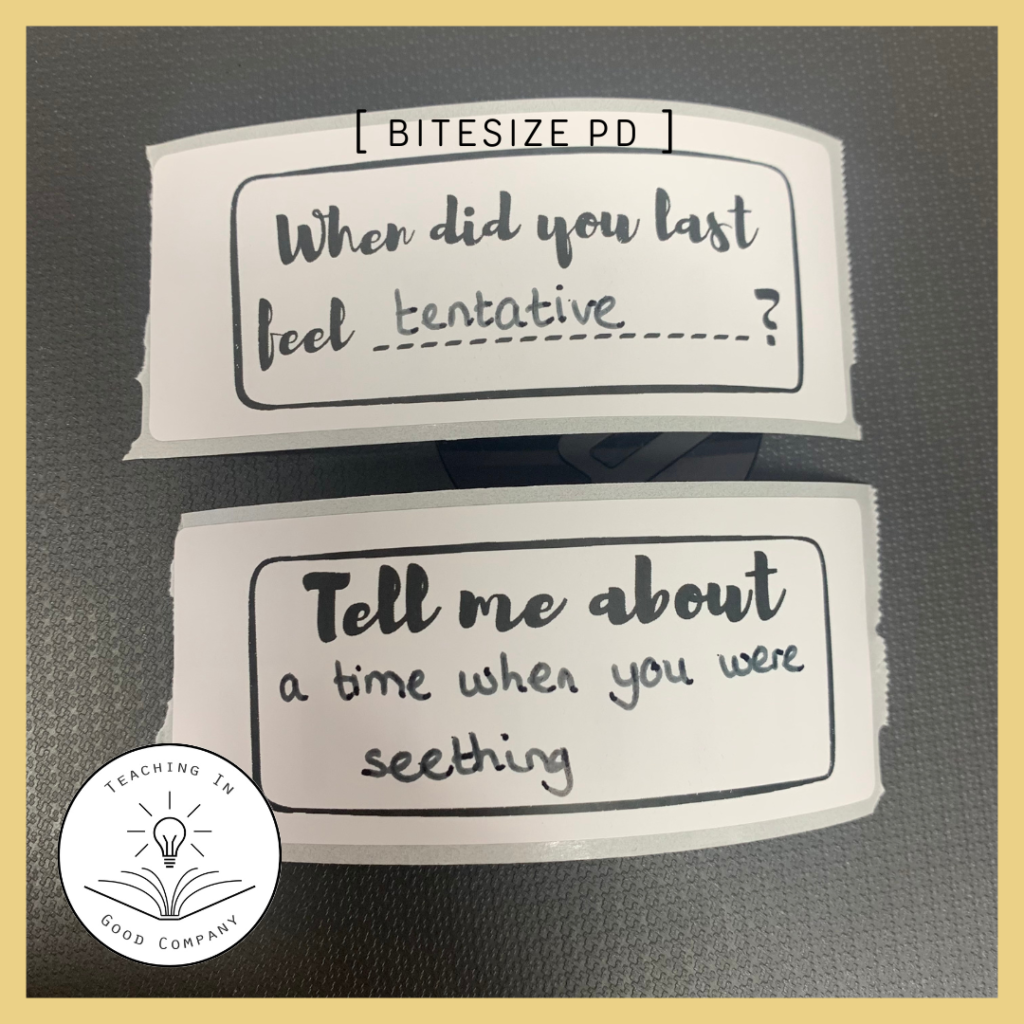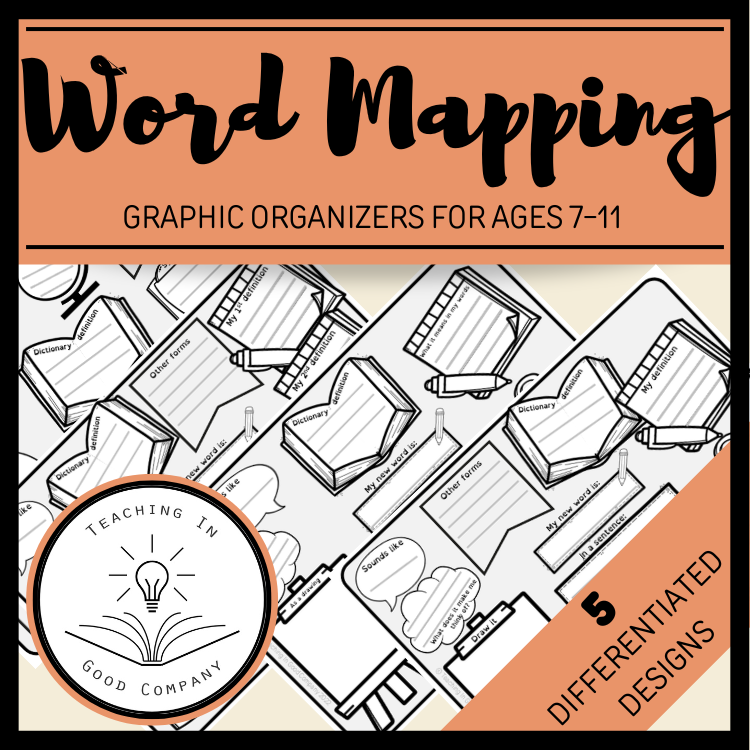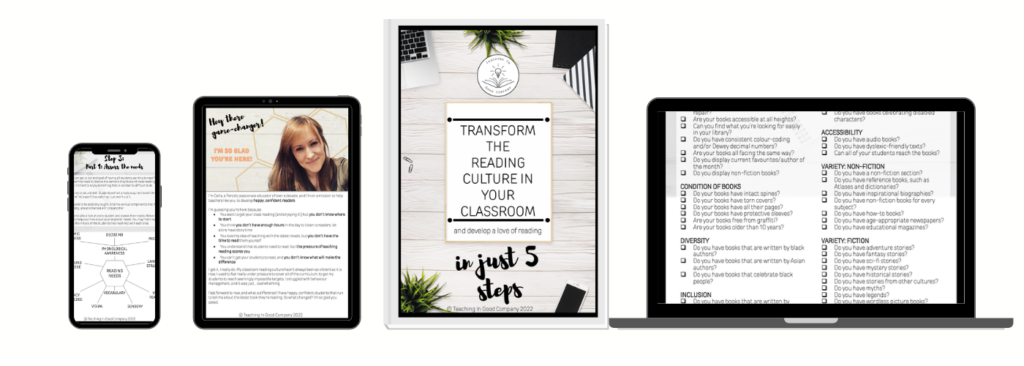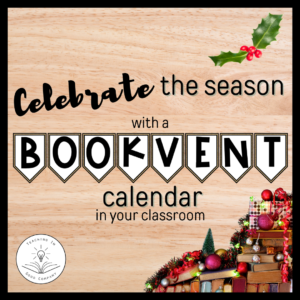What is the vocabulary gap? And why do teachers need to address it?
In this, the first of my Bitesize PD blog posts, I’ll delve into the research and data surrounding the vocabulary gap to provide you with crucial insight and tips. If you follow me on Instagram, you’ll already be familiar with my weekly Bitesize PD posts. In this new blog series, I’ll share even more details to help you harness the power of reading for pleasure.
First up:
WHAT IS THE ‘VOCABULARY GAP’?

The vocabulary gap is a term used to describe the difference between the word banks of the ‘word rich’ and the ‘word poor’.
There are over a million words in the English language, too many for any one person to know, and that’s before you consider that language constantly evolves. So much so, that every quarter, the Oxford English Dictionary has to add more words! In December 2022 alone, the OED added a further 700 words, phrases and senses! (‘Goblin mode’ was their word of the year for 2022)
If you were to put a figure to your own library of words, what would you estimate?
In 2013, The Economist summarised the data collated from their research, showing the average adult native test-taker having a vocabulary of 20,000- 35,000 words. A quick survey on testyourvocab.com calculated my vocabulary at 27,426. If you’re thinking about leading a staff meeting on vocabulary, it may be quite interesting to survey the staff body to see how your figures stack up- especially if you compare the data to your class’. You may be surprised by the findings!
WHAT’S THE IMPACT OF THE VOCABULARY GAP?
Early language acquisition varies enormously from one household to another. It is not from lack of will or interest, but usually from access to and support that underpins this difference. If we reflect on the subtleties that form this gap, we’ll find differences in resources, knowledge, language and basic survival necessities between those that have and those that don’t.
Regardless, here’s something we do know: the opportunities and future prospects of students who are ‘word poor’ are significantly fewer than their ‘word rich’ peers. Left unaddressed, the gap simply widens.

WHY DO I NEED TO KNOW ABOUT IT?
Let’s start with the fact that it exists: it’s big… and it’s getting bigger.
There’s an astonishing 3,000,000 word gap between children from the poorest and richest backgrounds, by the age of 3. That’s right! Before children have even stepped foot into a classroom, there is already a staggering invisible divide.
Teachers have the Herculean task of trying to teach these children, who’s starting points are so very different, to meet the same objectives, within the same time frames.
Yet, left ignored, the problem doesn’t simply go away, it just becomes a bigger problem for the next teacher who finds that the gap between those who understand and can use language, and those who can’t, is even greater.
You might well ask, well, how is it greater? Consider Scarborough’s Reading Rope, and you’ll see that five strands make up language comprehension and they are intertwined. To better comprehend language, readers need:
> a good background knowledge to the words they are reading;
> to be able to define and use the vocabulary they are reading;
> to understand language structures;
> to reason verbally through inference and figurative language;
> and, have a sound literacy knowledge.
Fall behind in one category, and it impacts them all.
If we consider that approximately, 1 in 5 children have English as an additional language, we can easily see how figurative language could misconstrued. Then, if we’re aware that opportunities to explore books, music, theatre, museums and locations vary enormously from one household to another, we can yet again see how background knowledge can vary enormously. Yet the task remains the same- every child must meet the age-related expectations for their year group and make good progress. Yikes!
Given that progress isn’t linear, and reading isn’t a natural skill, meeting those assigned milestones would be tough in a circumstance where each child came into school pre-programmed with the same information. The problem lies in the fact that our students are not robots.

HOW CAN I CLOSE THE VOCABULARY GAP?
If you’re reading this hoping for a quick fix, I’m afraid to tell you that there are none. There is no magic off-the-shelf programme you can buy to ‘fix’ the vocabulary gap. BUT there are things you can do to close the gap:
> Explicitly teach reading skills- ensure that every child has access to synthetic phonics programmes and keep at it. Without it, students will continue to struggle with word recognition, phonological awareness, decoding and lack sight recognition to develop the automaticity to become fluent readers
> Explicitly teach vocabulary- really scrutinise your teaching texts and make sure you plan to teach vocabulary. Word mapping can be a great tool to help students to learn new words and explore connections with known words.
> Immerse students in language-rich classrooms- see my FREE 5 step-guide for more information on how to do this
> Use a broad range of text types to provide breadth and depth. Think beyond paperbacks. Comics, graphic novels, magazines, newspapers, websites, blog posts and audiobooks all provide excellent information whilst appealing to the needs and wants of your students in different ways.
> Talk about words and give students opportunities to try them out, make mistakes and strengthen connections. Think about being word collectors. Who can collect the most new words? Celebrate using new words. Glean definitions and experiences from other people. It all adds up.

If you’re interested in learning more about the vocabulary gap, I highly recommend checking out Alex Quigley’s work. A great place to start is by checking out his blog here and his brilliant book ‘Closing The Vocabulary Gap’ Another great book that is super helpful for educators is Christopher Such’s ‘The Art and Science of Primary Reading‘.
Bitesize PD is a weekly installment on my Instagram page, but a more detailed version will be found here on my blog.






